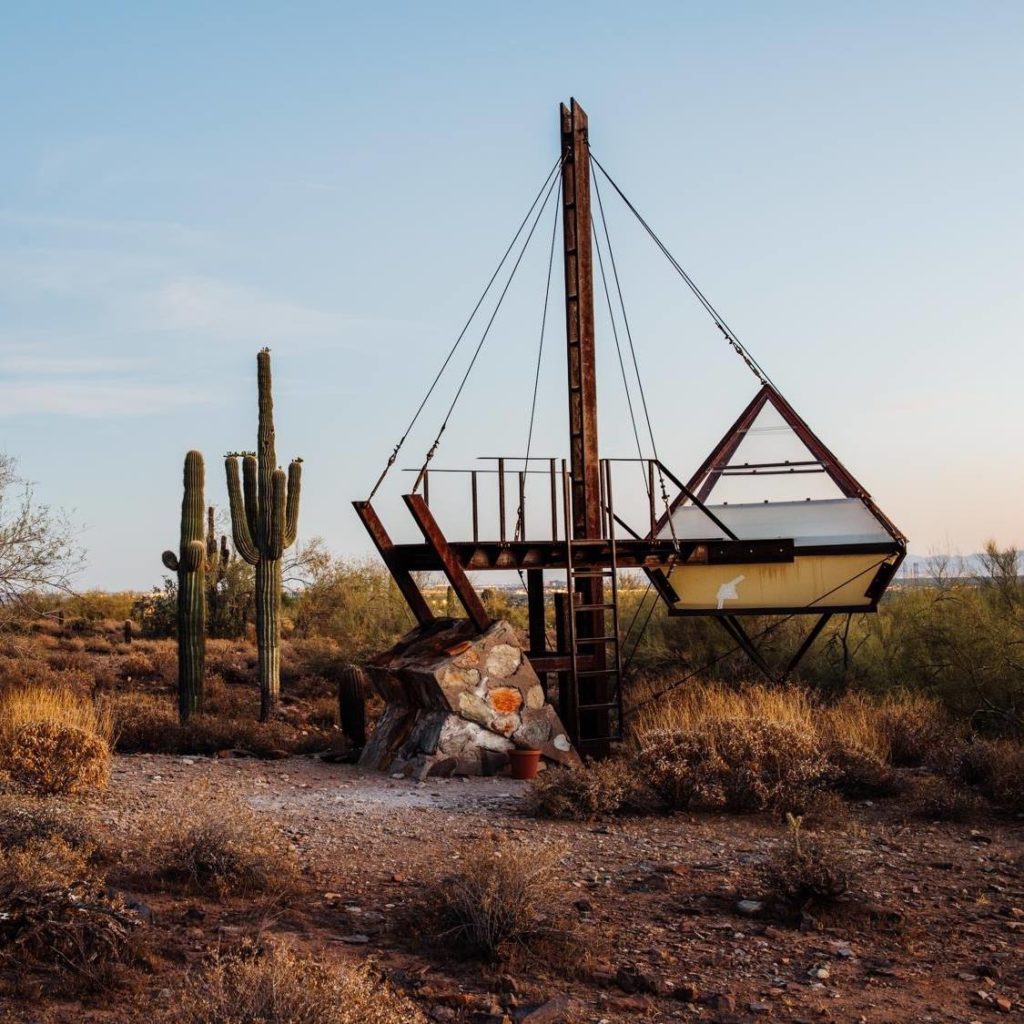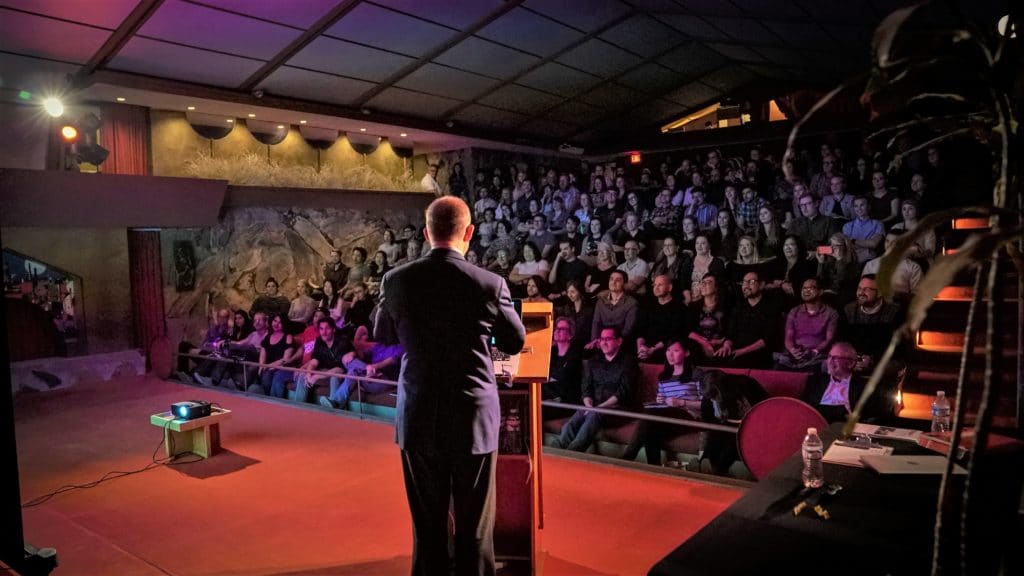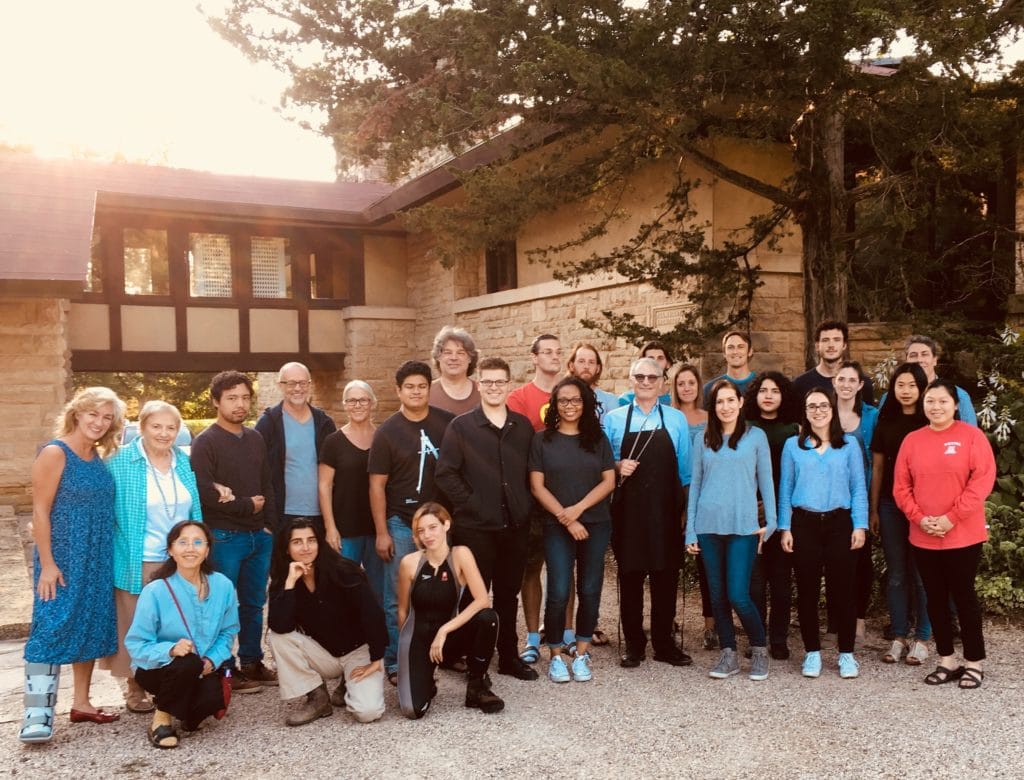

The School of Architecture at Taliesin
BY AARON BETSKY
Located at both Taliesin West in Arizona and Taliesin in Wisconsin, the School of Architecture at Taliesin (SoAT) continues Frank Lloyd Wright’s legacy in building and thought, to build a better future. It is a community that lives architecture and experiments, in and with the built environment. Formerly called the Frank Lloyd Wright School of Architecture, SoAT is a three-year Master of Architecture program that continues the Fellowship program founded by Wright. SoAT teaches learning-by-doing and experimental and organic architecture so that we can learn how to make a better world that we inhabit together.

The school started when Wright and his wife, Olgivanna, invited students to join them at Taliesin not only to learn about architecture, but to practice it while acquiring the knowledge necessary to rebuild their world. Together, the Wrights and the apprentices, as students of the Fellowship came to be known, worked on the buildings Wright was designing, learned from him and each other, and helped build large parts of the campuses, especially at Taliesin West. The apprentices cooked their own meals, worked the land at Taliesin, and built their own shelters at Taliesin West. They made music, danced, and staged performances, as Wright believed that architecture was an integral part of a project of changing the world both through art and design, and also through physical labor.
Today, SoAT is a fully accredited program, and students who graduate can pursue careers as architects—nearly 100% of them do so with success. However, SoAT believes that, above all else, it teaches students to know, understand, and change the human-made environment, no matter in what field. Evolving from Wright’s precepts of organic architecture, SoAT’s design process unfolds out of existing cultural and physical conditions, materials, and landscapes into well-crafted frameworks for human activities. SoAT is dedicated to breaking the boxes that keep us contained. We believe that we must address sprawl and the isolating principles of traditional architecture. At SoAT, we want to change the world through architecture.
SoAT accepts students who have a bachelor’s degree from an accredited institution; the degree does not have to be in architecture. We then immerse students in Taliesin West and Taliesin. Students and some faculty live and work together on both campuses. The drafting rooms are at the core of the work environment, but there are classrooms spread throughout both facilities.

At Taliesin West, students live in desert shelters they design and build themselves. They inherit these inventive and experimental structures from other students when they arrive, and, before they leave, they have to contribute their own designs. The shelters have no electricity or running water, but SoAT does provide locker room facilities. When the student designs their shelter, they do so as part of a thesis about what it means to live in the modern world, so they have to show how their design could be applied elsewhere. At Taliesin, most students live in rooms on either side of the drafting room, though other facilities are spread throughout the campus.
Faculty is led by Dean Chris Lasch, a partner with the New York and Tucson-based firm Aranda/Lasch, which is a leader in “computational architecture,” or the application of the latest tools and theories coming out of computer-assisted design and manufacturing to architecture. The remainder of the faculty consists of highly-trained individuals in both the Phoenix and Spring Green area, as well as visiting teaching fellows, who each semester bring fresh perspectives to SoAT.
Traditionally, students have truly lived architecture at Taliesin West and Taliesin. This means not only residing there, but also helping with cooking and washing, and working on building repairs. Students use the excellent performance facilities to make music and perform. In addition, SoAT’s Forum program brings some of the world’s best designers to not only lecture, but also work directly with the students as they stay on campus. Recent lecturers have included Frank Gehry, Liz Diller and Ricardo Scofidio, Patrik Schumacher, Tatiana Bilbao, Zhu Pei, and Marlon Blackwell. The Forum also brings local practitioners of note the campuses to share their work and thoughts with students, while also inviting non-architects such as Michael Bierut, a graphic designer, and Kathryn Gustafson, a landscape architect, to lecture.

In addition, SoAT also brings local high school students from Phoenix to work and be part of the lecture series. Supported by the Arizona Community Foundation, this program is paving a way into the field for students who might never have considered architecture.
In the last few years, SoAT has brought back its nature as a community-oriented institution by working with local communities. Since 2015, it has been working with the towns of Globe and Miami, Arizona, to research, document, and offer suggestions for their built spaces that will allow them to grow as communities. This has produced several improvements to the streetscape, and a pollinator garden with additional facilities. Various other civic spaces are also being planned. At Taliesin, SoAT is working with the nearby community of Mazomanie on the design and construction of a bandshell.
For those interested in SoAT, or in architecture in general, SoAT offers an eight-week Immersion Program. In this program, students live and work on campus, sharing meals, duties, and classes with the regular students, while also taking dedicated classes and engaging in explorations of both the site and materials.
SoAT is a small institution. Because it is dedicated to being integral to both Taliesin and Taliesin West, it will never have more than 60 students, which is the maximum that can be housed at either facility. As such a small institution, it must support itself through tuition that it keeps low enough so that all interested can live architecture here. SoAT invites your inquiries about admission at its website Taliesin.edu, and by contacting an admissions specialist at admissions@taliesin.edu.